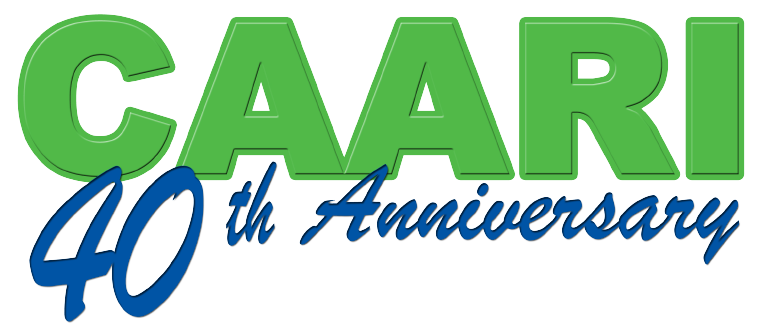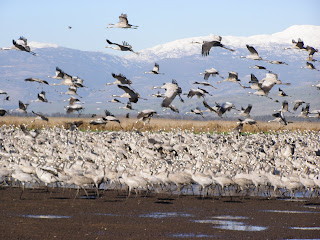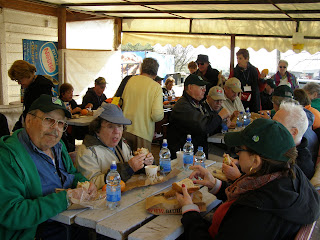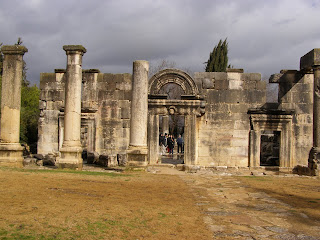
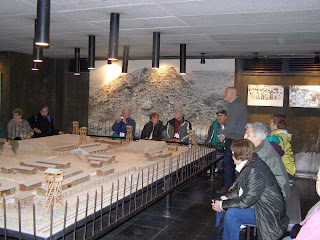
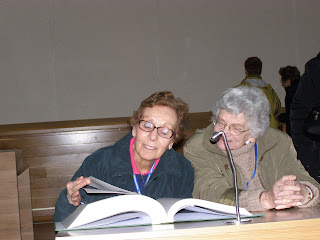
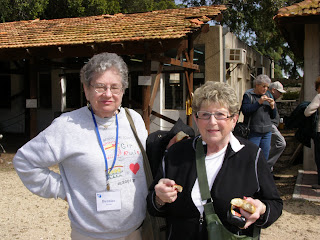
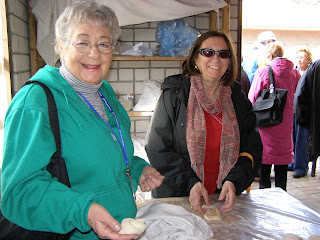
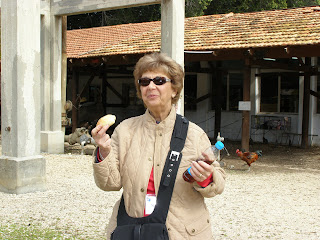
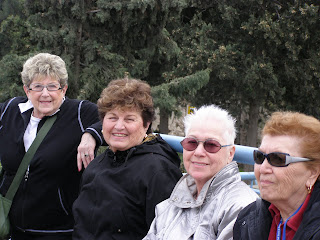
CAARI Galilee Touring Program in Review by Ron and Marilyn Nevsky, Sheila Fedder, Frances Dvorchik and Susan Horwitz (Director CAARI Program)
The days are flying by – it seems that there is no time to write. We know that friends and family are watching the blog – waiting to see what is happening. So… tonight we will try and give you a brief overview of what we have been doing. We must say that the weather (we don’t want to say this too loud so read this in a whisper) has greatly improved – we now have blue skies, sun and warmer temperatures. We had a few days of real winter weather – cold, rain, wind – but the spirit of the group never dampened and every day we set out for our destinations! We dressed in many layers – wore jackets, sweaters, turtlenecks, hats, gloves and raincoats – umbrellas worked sometimes. So…here goes!
The days are flying by – it seems that there is no time to write. We know that friends and family are watching the blog – waiting to see what is happening. So… tonight we will try and give you a brief overview of what we have been doing. We must say that the weather (we don’t want to say this too loud so read this in a whisper) has greatly improved – we now have blue skies, sun and warmer temperatures. We had a few days of real winter weather – cold, rain, wind – but the spirit of the group never dampened and every day we set out for our destinations! We dressed in many layers – wore jackets, sweaters, turtlenecks, hats, gloves and raincoats – umbrellas worked sometimes. So…here goes!
Sunday, we left Tel Aviv for our journey north – first stop Ein Shemer. This is a Kibbutz in the middle of the Country. They have restored a portion of the kibbutz so that you understand what kibbutz life was like – back then! We had a wonderful guide – we baked bread (which turned out to be delicious – we were all so amazed with our creations) – had a tractor ride through the kibbutz so we could see what the kibbutz is like today. Times have changed and so has the kibbutz life-style.
From there we visited Haifa – viewing city and port from various lookouts – including a view from the Bahai Gardens – magnificent! On to Nahariya and our home for the next week.
From there we visited Haifa – viewing city and port from various lookouts – including a view from the Bahai Gardens – magnificent! On to Nahariya and our home for the next week.
Monday – Ted and Harriet Fredman wrote about our visit to Rosh Hanikra under stormy conditions.
Tuesday – Our first stop was the Ghetto Fighters Museum, located on a kibbutz. This is an outstanding facility and was the first Holocaust Museum in Israel – before Yad Vashem. Today they have the most modern visuals – all hi-tech, which tell the story of the resistance and personal stories of the survivors – many still live and/or lived on the kibbutz. One of the highlights, although not hi-tech by 21C standards, was a most incredible replica of Treblinka. This was re-created by one of the prisoners, and because he was a carpenter , and useful to the Germans, he actually survived. He was meticulous in recording the details, including measurements of the barracks, pits, etc., and then recreated the camp for the Museum, as well as evidence in the Adolph Eichman Trial. There were many death camps, in Poland, and Treblinka was one that operated for only one year and was responsible for hundreds of thousands of deaths! The CAARI Canadians were proud of JNF Canada’s contribution to this wonderful Museum.
After the sobering visit we traveled to upper Nazareth to the Elite Chocolate Factory. Sorry to say that we don’t have pictures of this visit – as we were not allowed to photograph the tour – guess they were afraid we would show the pictures to Hershey Chocolate! If we had had a camera – you would have seen the 47 of us – dressed in red jackets and hats – we had to be sanitary! We loved the smell of the chocolate – with mouths watering we watched the conveyor belts filled with chocolate bars, cookies and cakes! We all wanted to sample some of the “rejects” but we had to wait until the end of the tour to sample – all that we could eat – and we can eat!! They gave us bags of candy and we were very happy campers!
After the sobering visit we traveled to upper Nazareth to the Elite Chocolate Factory. Sorry to say that we don’t have pictures of this visit – as we were not allowed to photograph the tour – guess they were afraid we would show the pictures to Hershey Chocolate! If we had had a camera – you would have seen the 47 of us – dressed in red jackets and hats – we had to be sanitary! We loved the smell of the chocolate – with mouths watering we watched the conveyor belts filled with chocolate bars, cookies and cakes! We all wanted to sample some of the “rejects” but we had to wait until the end of the tour to sample – all that we could eat – and we can eat!! They gave us bags of candy and we were very happy campers!
Wednesday – The weather is looking better and better. Our first stop was at Bar’am Synagogue, which was from the Roman period. The site was truly beautiful and there was an abundance of arches and columns, with the corner stones still in place. We continued our journey along the northern border road – looking into Lebanon, and once again, everyone was impressed with the work of JNF, who constructed the new security road, for the protection of residents of kibbutzim and moshavim who live and travel in the area. It was the first time that many of the CAARI participants had been to the border. We were given an explanation of the second Lebanon War and the positions held by Hezbollah and the IDF. One of the local fruit farmers told us of their experiences on the kibbutz during the War, and his feelings about the situation, in general. This type of program is part of what makes CAARI so unique! After lunch in Kiryat Shmona (of course, we don’t miss a meal!), we went to the fantastic Agmon Hula Bird Migration Center, another JNF reclamation project. It has finally registered that JNF does so much more in Israel than planting trees.
The area was originally wetlands and swamp which was a devastating source of the malaria mosquito. It was drained in the 1950s, and a number of years later it was realized that this not ecologically sound. JNF once again undertook the project of re-flooding, and today it provides farmland and a major migration route for birds traveling back and forth between Europe and Africa.
We were treated to an amazing ride on a vehicle designed almost, one might say, in theater style to accommodate over 50 people. It was pulled by a tractor which took us through an area with approximately 24,000 cranes. Another tractor pulled a spreader that sprayed corn to feed them so that they wouldn’t attack the fields of crops in the valley. It was an amazing sight to watch the feeding frenzy! Watch and enjoy what we saw and heard!
After dinner we were treated to one of our regular speakers, Hadassah Bat Haim, a long time resident of Nahariya, who regaled us with her personal stories of her early days in Israel, told with her usual wry English wit.
was
The area was originally wetlands and swamp which was a devastating source of the malaria mosquito. It was drained in the 1950s, and a number of years later it was realized that this not ecologically sound. JNF once again undertook the project of re-flooding, and today it provides farmland and a major migration route for birds traveling back and forth between Europe and Africa.
We were treated to an amazing ride on a vehicle designed almost, one might say, in theater style to accommodate over 50 people. It was pulled by a tractor which took us through an area with approximately 24,000 cranes. Another tractor pulled a spreader that sprayed corn to feed them so that they wouldn’t attack the fields of crops in the valley. It was an amazing sight to watch the feeding frenzy! Watch and enjoy what we saw and heard!
After dinner we were treated to one of our regular speakers, Hadassah Bat Haim, a long time resident of Nahariya, who regaled us with her personal stories of her early days in Israel, told with her usual wry English wit.
was
Thursday, Feb.21
Hiking shoes, hats and water bottles (not empty!) we headed out for our picnic and northern hike. On our way, we stopped in the charming village of Rosh Pina. It was a glorious day, and the setting was truly representative of how things were built in the 1880s, with a fine example of a synagogue that is still in use today. The scenery really the icing on the cake – the flowering almond trees and spring flowers were beginning to show themselves to us. We had a very knowledgeable local guide who described the hardships experienced by the early settlers, and related a lot of folklore. We must admire their tenacity and determination to create a community of thriving farmers. The village is now comprised of many artists, quaint shops and cafes, including a marvelous chocolatier … it goes without saying, that some of the group managed to spend a few shekels too!
Back on the bus, and to our luncheon destination – the Banias! So, after revitalizing our bodies for the 2 hour hike, most of the group set off on the trail, through woods, waterfalls and ancient ruins. It was a perfect day for a hike, and so many tourists thought so too … people from far and wide came to view the Temple of Pan and enjoy the calm spring waters and general serenity of the area.
Hiking shoes, hats and water bottles (not empty!) we headed out for our picnic and northern hike. On our way, we stopped in the charming village of Rosh Pina. It was a glorious day, and the setting was truly representative of how things were built in the 1880s, with a fine example of a synagogue that is still in use today. The scenery really the icing on the cake – the flowering almond trees and spring flowers were beginning to show themselves to us. We had a very knowledgeable local guide who described the hardships experienced by the early settlers, and related a lot of folklore. We must admire their tenacity and determination to create a community of thriving farmers. The village is now comprised of many artists, quaint shops and cafes, including a marvelous chocolatier … it goes without saying, that some of the group managed to spend a few shekels too!
Back on the bus, and to our luncheon destination – the Banias! So, after revitalizing our bodies for the 2 hour hike, most of the group set off on the trail, through woods, waterfalls and ancient ruins. It was a perfect day for a hike, and so many tourists thought so too … people from far and wide came to view the Temple of Pan and enjoy the calm spring waters and general serenity of the area.
On Friday, we began the day at a lookout over the Biriya Forest, where we helped to plant trees last year when the hills were black with burnt debris. This area had terrible forest fires caused by Katusha rockets during the war with Lebanon. It was wonderful to see the saplings already making their difference to the hills. Then we traveled on to Safed and visited a very special cheese factory that has been functioning for 160 years of a family’s home in Safed. Araf , the great great grandson gave us the family history and explained the process was 6th generation. The cheeses are very special (and tasty too, as we got sample their specialities) and only sold in small stores in Israel.. Later we spent some time wandering around Safed before returning to the hotel to relax and get ready for Shabbat
Tomorrow we leave for the Dead Sea – stayed tuned for our next adventure.
Warm Regards,
Frances, Sheila, Ron and Marilyn and Susan
